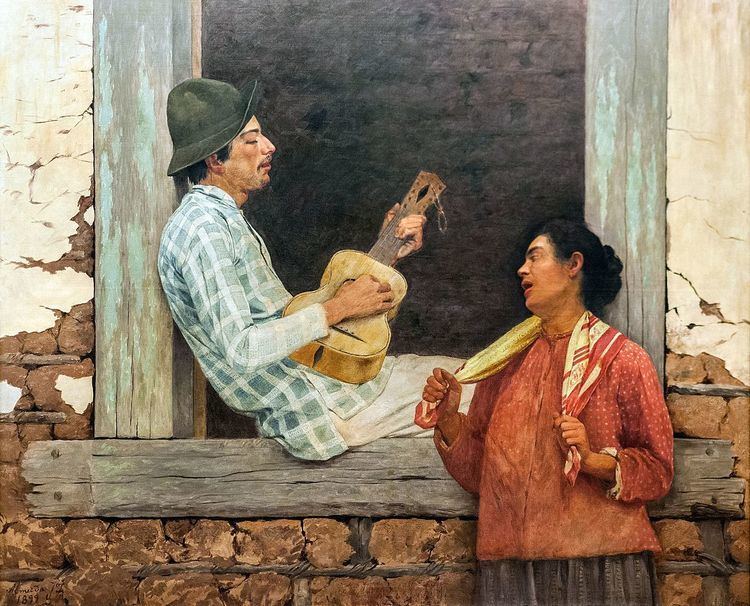 | ||
The viola caipira (Portuguese for country guitar) is a brazilian ten-string guitar with five courses of strings arranged in pairs. The instrument is often simply called viola, and was introduced in São Paulo, where it is widely played as the basis for the música caipira, or São Paulo's folk music
Contents
Origins
The origins of the viola caipira are obscure, but evidence suggests it evolved from the vihuela/viola de mano that Spanish and Portuguese settlers took to the new world. It has also similarities with the 5 course baroque guitar, that elsewhere evolved into the modern guitar. It is likely a descendant of one of the many folk guitars that have traditionally been played in Portugal. The viola braguesa and viola amarantina, for instance, are two types of ten-string guitars from the north of Portugal, which are closely related to the viola caipira.
Some have described the viola caipira as Brazil's national instrument, but others argue that the tambourine-like pandeiro has a stronger claim. The Brazilian Embassy in Washington lists a national flower among the official symbols of Brazil, but no national musical instrument. What is undisputed is that the viola caipira was introduced in São Paulo before the violão, and is the basis for the música caipira, or São Paulo's folk music, as Inezita Barroso states.
Tuning and playing technique
A large number of tunings are used; open tunings are common. Unlike most steel-string guitars, its strings are plucked with the fingers of the right hand similarly to the technique used for classical and flamenco guitars, rather than by the use of a plectrum.
Popularity
Violas are present in nearly all Brazilian music forms, anywhere in the country (although it is declining in some places). It most often associated with Caipira Music (Brazilian country music), with some forms of North-Eastern music and with folkloric music. It was once used to play urban music, like choro, samba and Maxixe, but has been replaced by the acoustic guitar.
Well-known players of Brazilian viola include Zé Côco do Riachão (composer from Minas Gerais), Toninho Ramos (composer from Minas Gerais live in France) and Almir Sater (successful singer-songwriter from Mato Grosso do Sul).
A National Association of Viola Players (Associação Nacional dos Violeiros) has been founded in 2004 and the Ministry of Culture has declared the preservation of the Viola tradition as of national interest.
